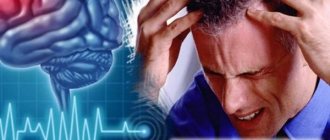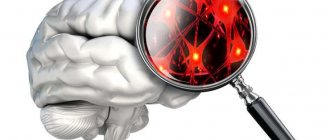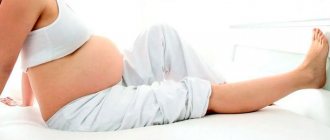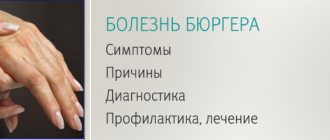Physical inactivity is a pathological condition in which, due to low physical activity, muscle strength decreases and muscle atrophy occurs. Physical inactivity is not a disease. It is considered a risk factor that provokes the development of diseases of all systems and organs, but primarily the heart, blood vessels and musculoskeletal system.
We will talk about the causes of physical inactivity, consequences and comprehensive restoration of the body, including osteopathic methods.
Physical inactivity - what is it?
Physical inactivity is a condition characterized by insufficient physical activity and decreased muscle strength. It is not an independent disease. The main symptoms of physical inactivity: constant fatigue and decreased performance, excess weight, insomnia and emotional lability. Diagnosis is based on medical history and objective examination; laboratory and instrumental methods are used to identify concomitant pathologies. Treatment consists of gradually increasing the volume of physical activity and eliminating the etiological factors of physical inactivity. If there are indications, drug correction is carried out.
Causes and risk factors
Physical inactivity can be caused by objective reasons, for example, disability, severe and long-term illness. But in most cases it is associated with improper lifestyle organization or sedentary work. The main risk factors for the development of physical inactivity include:
- insufficient physical activity;
- excess body weight;
- psychological disorders;
- somatic diseases;
- genetic factors;
- intrauterine fetal hypoxia;
- birth injuries;
- bad habits.
What are the dangers of physical inactivity?
Diseases of the heart and blood vessels
Human life expectancy in the modern world is mainly influenced by non-communicable diseases. These include cardiovascular diseases, diabetes mellitus, malignant neoplasms and chronic respiratory diseases - they are the causes of 75% of all deaths in Russia. Their distribution is directly related to heredity and modern lifestyle. According to WHO, 50% of our health and life expectancy are determined by the lifestyle we lead.
Physical inactivity is a sedentary lifestyle. If a person sits for more than 5 hours a day and moves less than 10 hours a week, he develops physical inactivity, which stimulates the appearance of excess weight and hypertension (high blood pressure) - the main causes of the development of dangerous complications for blood vessels and the heart.
In the 21st century, physical labor is almost completely mechanized. People engaged in intellectual work lead a sedentary lifestyle and deprive themselves of the physical activity necessary for the body. This contributes to the development of physical inactivity.
The basis of the life activity of our body is metabolism (metabolism) - biochemical and energy processes that ensure the use of substances that we get from food to maintain life.
Metabolic level is determined by:
- basic metabolism - the energy consumed by the body at rest (60–70% of all energy expenditure), depending on genetic characteristics, body type, gender, age, health and other factors;
- additional energy consumption for thermoregulation and physical activity of our body (work, household activities, sports training).
To maintain energy balance, the average calorie intake should be 1500–1800 kcal/day for men and 1200–1500 kcal/day for women [1].
Consequences of physical inactivity:
- Cardiovascular disease is the result of high blood pressure, which negatively affects the ratio of “good” to “bad” cholesterol in the blood and leads to atherosclerosis. This group of diseases occupies a leading place among all complications associated with lack of physical activity.
- Overweight and obesity, which increases the risk of developing metabolic syndrome and diabetes.
- Metabolic disease.
- Decreased respiratory muscle strength.
- Deterioration of mental performance.
- Weakening of the immune system.
- Diseases of the musculoskeletal system.
- Dysfunction of the abdominal and pelvic organs.
- Sexual dysfunction [1].
Signs of insufficient physical activity
Over time, physical inactivity leads to:
- rapid fatigue and increasing fatigue;
- decreased performance;
- sleep disturbance;
- increased causeless nervousness;
- stress and depression;
- regular headaches of varying intensity;
- weight gain;
- shortness of breath with little physical exertion;
- back pain.
Physical inactivity is a risk factor for the development of cardiovascular diseases, which is associated with an unhealthy lifestyle. Health-improving physical activity can prevent the development of physical inactivity [1].
Healthy physical activities include:
- general physical training - household physical activity and exercises. This is the minimum required activity. Exercise, warm-up during the day and evening exercises are necessary for people of any age, as they normalize the functioning of all body functions;
- training physical activity that allows you to maintain optimal physical shape [1].
Workout Tips
- Exercises should be designed for all muscle groups.
- The workout should consist of a warm-up (5-10 minutes), a main load (20-40 minutes) and a final part (5-10 minutes).
- Training should be regular (3-5 times a week). First, regularity is established, then the intensity of the classes increases.
- The intensity and duration of daily physical activity to prevent physical inactivity must be adequate to the level of physical fitness and health status of the person.
- Increasing the intensity of exercise should be gradual. You should start with a threshold load, which is slightly higher than the level of your usual daily activity, and only then increase the power of your training.
- To prevent physical inactivity, experts advise: going up and down stairs, walking more, walking in nature and playing outdoor games with children.
To prevent physical inactivity, experts advise: going up and down stairs, walking more, walking in nature and playing outdoor games with children [1].
Bibliography
1. Yu. M. Pozdnyakov. 10 steps to a healthy heart. Physical activity. https://gnicpm.ru/wp-content/uploads/2020/01/phys_act_pozdnykov.pdf, accessed 06/19/2020.
Co-author, editor and medical expert:
Volobueva Irina Vladimirovna
Born 09/17/1992.
Education:
2015 - Sumy State University, specializing in General Medicine.
2017 — Completed an internship in the specialty “Family Medicine” and also defended her master’s thesis on the topic “Peculiarities of the development of antibiotic-associated diarrhea in children of different age groups.”
Symptoms of physical inactivity
Physical inactivity is characterized by gradual development, that is, the symptoms of the pathology do not appear in the patient immediately, but periodically. The disease of an immobile lifestyle begins to manifest itself in the form of an increasing feeling of apathy, rapid fatigue, a noticeable decrease in performance, disturbances in the quality of sleep, the appearance of nervousness, irritability, and aggressiveness. As the disease progresses, symptoms become aggravated - periodic headaches begin, the risk of fractures increases, weight increases, shortness of breath occurs, and back pain worsens. In some women, physical inactivity provokes the development of anorgasmia, and in men, erectile dysfunction.
Notes
- [www.ambulatorypediatrics.org/article/S1530-1567(05)60054-8/abstract Elsevier]. Ambulatorypediatrics.org. Retrieved November 30, 2013.
- [www.jpeds.com/article/S0022-3476(08)00176-5/abstract Elsevier]. Jpeds.com. Retrieved November 30, 2013.
- Olds Tim, Ridley Kate, Dollman Jim
Screenieboppers and extreme screenies: the place of screen time in the time budgets of 10–13 year-old Australian children // Australian and New Zealand Journal of Public Health. - 2006. - Vol. 30, No. 2. - P. 137–142. — DOI:10.1111/j.1467-842X.2006.tb00106.x. to correct - Lopez AD, Mathers CD, Ezzati M, Jamison DT, Murray CJ (May 2006). “Global and regional burden of disease and risk factors, 2001: systematic analysis of population health data.” Lancet 367
(9524):1747–57. DOI:10.1016/S0140-6736(06)68770-9. PMID 16731270. - [www.womenshealth.gov/faq/osteoporosis.cfm Osteoporosis - Frequently Asked Questions]. United States Department of Health and Human Services (2009). Retrieved February 1, 2010.
| : Incorrect or missing image | To improve this article it is desirable:
|
Features of the course in children
In children and adolescents, it develops due to limited mobility at school and at home.
When a child spends most of the day at school, stagnation of blood and lymph occurs in the lower extremities, but the brain and other organs are less well supplied with blood. Oxygen starvation occurs, attention, memory, ability to think and concentrate deteriorate.
Weakness of the muscular frame, especially the anti-gravity muscles of the back, provokes poor posture and curvature of the spine.
In children, an inactive lifestyle leads to the development of diseases much faster, because their skeleton and muscular system are not yet fully formed and do not have a sufficient reserve of resistance.
Excerpt characterizing physical inactivity
“Oh, madam,” he said, “madam, countess... Countess Rostova, if I’m not mistaken... I beg your pardon, excuse me... I didn’t know, madam.” God knows, I didn’t know that you honored us with your visit; you came to see your daughter in such a suit. I beg your pardon... God sees, I didn’t know,” he repeated so unnaturally, emphasizing the word God and so unpleasantly that Princess Marya stood with her eyes downcast, not daring to look at either her father or Natasha. Natasha, having stood up and sat down, also did not know what to do. One m lle Bourienne smiled pleasantly. - I beg your pardon, I beg your pardon! “God knows, I didn’t know,” the old man muttered and, having examined Natasha from head to toe, he left. M lle Bourienne was the first to appear after this appearance and began a conversation about the prince’s ill health. Natasha and Princess Marya silently looked at each other, and the longer they silently looked at each other, without expressing what they needed to express, the more unkindly they thought about each other. When the count returned, Natasha was discourteously delighted with him and hurried to leave: at that moment she almost hated this dry old princess, who could put her in such an awkward position and spend half an hour with her without saying anything about Prince Andrei. “After all, I couldn’t be the first to start talking about him in front of this French woman,” thought Natasha. Princess Marya, meanwhile, suffered from the same thing. She knew that she had to tell Natasha, but she could not do it both because M lle Bourienne interfered with her, and because she herself did not know why it was so difficult for her to start talking about this marriage. When the count was already leaving the room, Princess Marya quickly walked up to Natasha, took her hands and, sighing heavily, said: “Wait, I need...” Natasha looked at Princess Marya mockingly, not knowing why. “Dear Natalie,” said Princess Marya, “know that I am glad that my brother has found happiness...” She stopped, feeling that she was telling a lie. Natasha noticed this stop and guessed the reason for it. “I think, princess, that now it’s inconvenient to talk about this,” Natasha said with outward dignity and coldness and with tears that she felt in her throat. “What did I say, what did I do!” she thought as soon as she left the room. We waited a long time for Natasha for lunch that day. She sat in her room and sobbed like a child, blowing her nose and sobbing. Sonya stood over her and kissed her hair. - Natasha, what are you talking about? - she said. -What do you care about them? Everything will pass, Natasha. - No, if you knew how offensive it is... exactly me... - Don’t tell me, Natasha, it’s not your fault, so what does it matter to you? “Kiss me,” said Sonya. Natasha raised her head, kissed her friend on the lips, and pressed her wet face to hers. – I can’t say, I don’t know. “No one is to blame,” said Natasha, “I am to blame.” But all this is painfully terrible. Oh, he’s not coming!... She went out to dinner with red eyes. Marya Dmitrievna, who knew how the prince received the Rostovs, pretended that she did not notice Natasha’s upset face and firmly and loudly joked at the table with the count and other guests. That evening the Rostovs went to the opera, for which Marya Dmitrievna got a ticket. Natasha did not want to go, but it was impossible to refuse Marya Dmitrievna’s affectionateness, exclusively intended for her. When she, dressed, went out into the hall, waiting for her father and looking in the large mirror, saw that she was good, very good, she became even more sad; but sad, sweet and loving. “My God, if only he were here; Then I would not have the same way as before, with some stupid timidity in front of something, but in a new, simple way, I would hug him, cling to him, force him to look at me with those searching, curious eyes with which he so often looked at me and then would make him laugh, as he laughed then, and his eyes - how I see those eyes! thought Natasha. - And what do I care about his father and sister: I love him alone, him, him, with this face and eyes, with his smile, masculine and at the same time childish... No, it’s better not to think about him, not to think, to forget, completely forget for this time. I can’t stand this waiting, I’m going to start crying,” and she moved away from the mirror, making an effort not to cry. - “And how can Sonya love Nikolinka so smoothly, so calmly, and wait so long and patiently”! she thought, looking at Sonya entering, also dressed, with a fan in her hands. “No, she’s completely different. I can't"! Natasha felt at that moment so softened and tender that it was not enough for her to love and know that she was loved: she needed now, now she needed to hug her loved one and speak and hear from him the words of love with which her heart was full. While she was riding in the carriage, sitting next to her father, and thoughtfully looking at the lights of the lanterns flashing in the frozen window, she felt even more in love and sadder and forgot with whom and where she was going. Having fallen into a line of carriages, the Rostovs' carriage slowly squealed in the snow and drove up to the theater. Natasha and Sonya hastily jumped out, picking up dresses; The count came out, supported by footmen, and between the ladies and men entering and those selling posters, all three went into the corridor of the benoir. The sounds of music could already be heard from behind the closed doors.
What are the dangers of body immobility and physical inactivity?
- Since there is no physical activity, the patient’s muscles begin to flabby, weaken, and their elasticity and firmness are lost. This condition is dangerous due to the development of atrophy.
- The patient's strength and endurance decrease, and pathologies of the nervous system are observed (nervous disorders, depression).
- A prolonged course of the disease threatens the development of osteoporosis, as the bones stop absorbing calcium. Pathology can cause the development of osteoarthritis, as well as osteochondrosis.
- Passivity is a direct path to the development of cardiac pathologies (coronary disease, hypertension, arrhythmia).
- The functionality of the respiratory system is impaired, which leads to congestion and obstruction.
- The pathology provokes a malfunction of the digestive system - intestinal motility is disrupted, constipation and colitis appear.
All of the above negative conditions lead to a decrease in the patient’s life expectancy.
Complications of physical inactivity
The main “target” of physical inactivity is the cardiovascular system. Patients experience dyslipidemia and atherosclerotic vascular lesions, which contribute to the development of coronary artery disease. Due to calcification and rigidity of the vascular wall, arterial hypertension occurs. The mortality rate from cardiac causes (heart attack, heart failure) in patients with physical inactivity is 20-30% higher than the population average.
The musculoskeletal system is affected. Osteoporosis develops and the incidence of bone fractures increases. The function of the joints (osteoarthrosis) and the spinal column (osteochondrosis) suffers. A connection between physical inactivity and aging has been established: in older women who devote less than 40 minutes to physical activity per day, their biological age is 8-10 years higher than their passport age. Ultimately, all these complications reduce life expectancy.
What happens to the body during physical inactivity?
Human muscles must contract, which is facilitated by physical activity. Ideally, this is at least 2.5 hours a week of aerobic (cardio) exercise and 1.5 hours of strength training.
If a person moves little, his muscular strength decreases and the conductivity of neuromuscular impulses deteriorates, that is, the muscle fibers practically stop contracting.
Hence the main danger of physical inactivity - consequences that sooner or later make themselves known, and well, if not all at once:
Among the severe consequences of physical inactivity are heart failure, heart attacks, osteoporosis, osteoarthritis, that is, degenerative changes in bones and joints. Thus, not only a person’s quality of life decreases, but also its duration.
Treatment of physical inactivity
If symptoms of pathology appear, you need to visit a competent specialist for diagnosis. This is necessary, since the symptoms of physical inactivity are not specific and may indicate the progression of other ailments. The course of treatment is developed based on the degree of development of the disease, as well as the general condition of the patient.
Before treating the disease, it is necessary to eliminate the true cause, which led to physical inactivity. The treatment plan is usually aimed at eliminating the consequences of the pathology (obesity, increased blood pressure, sexual dysfunction, etc.).
Correction of the pathological condition, in addition to a gradual increase in physical activity, includes physiotherapeutic methods, massage, and diet therapy. To restore the functions of organs and body systems during physical inactivity, the following are recommended:
- physical therapy – you should start with it, especially with physical inactivity that has developed against the background of somatic diseases;
- aerobic physical activity (fast walking, running, badminton, tennis, skiing);
- strength exercises;
- exercises to stretch muscles and ligaments.
For physical inactivity that has developed against the background of psychological problems, it is recommended to work with a psychologist or psychotherapist. Children, as well as adults, are recommended to play outdoor games, play sports or dance, and travel.
Rehabilitation
In case of physical inactivity caused by an acute or chronic disease, it is necessary to seek medical help. In the clinics of nervous diseases and orthopedics, a comprehensive restoration of the body after a period of physical inactivity is carried out, with the participation of a neurologist, orthopedist, nutritionist, massage therapist and exercise therapy instructor. Individual exercise therapy classes, combined with hardware physiotherapy, massage, and a nutrition program, help restore muscle tone, help normalize body weight, and stabilize the functioning of internal organs. Developed movement habits help maintain the achieved results for a long time. If a person is in a hospital and bedridden, then ordinary breathing exercises with a combination of antithrombotic drugs can prevent the development of such a serious complication as thromboembolism.
Prognosis and prevention
By normalizing the level of physical activity, the risk of cardiovascular complications and critical conditions is significantly reduced. Patients who follow all medical recommendations increase their life expectancy and improve their quality of life. Primary prevention of physical inactivity involves combating risk factors (sedentary work, obesity, etc.), moderate but regular physical activity.
The main measures to prevent physical inactivity include:
- sufficient physical activity;
- long walks in the fresh air;
- alternating mental and physical activity;
- timely treatment of somatic diseases;
- correction of excess weight;
- balanced diet;
- rejection of bad habits.
Causes of physical inactivity
Despite the global promotion of an active lifestyle and the cult of the body, according to WHO, at least a quarter of the world's population suffers from physical inactivity. Pathology ranks fourth in the list of causes of early mortality from cardiovascular diseases.
The main reason for physical inactivity is urbanization and a sedentary lifestyle, hence its fair name - “a disease of civilization.”
The main risk factors that predetermine the development of physical inactivity:
- prolonged inactivity after a serious illness or surgery;
- specific work that forces a person to spend the working day in a sitting or standing position. With the transition to remote work during the pandemic, the situation did not get better;
- due to fatigue, muscle and back pain caused by forced body position, people refuse to play sports;
- personal transport leaves many people no chance to walk even short distances;
- obesity can be both a cause and a consequence of physical inactivity;
- passion for social networks and computer games among adults and children. According to statistics, about 80% of teenagers remain indifferent to sports for this reason.
People work five days a week, and on weekends they try to sleep and relax on the couch, but rest does not bring relief. Today you don’t even need to go to the store; any food and non-food products are brought home, which further aggravates the pathological condition.









